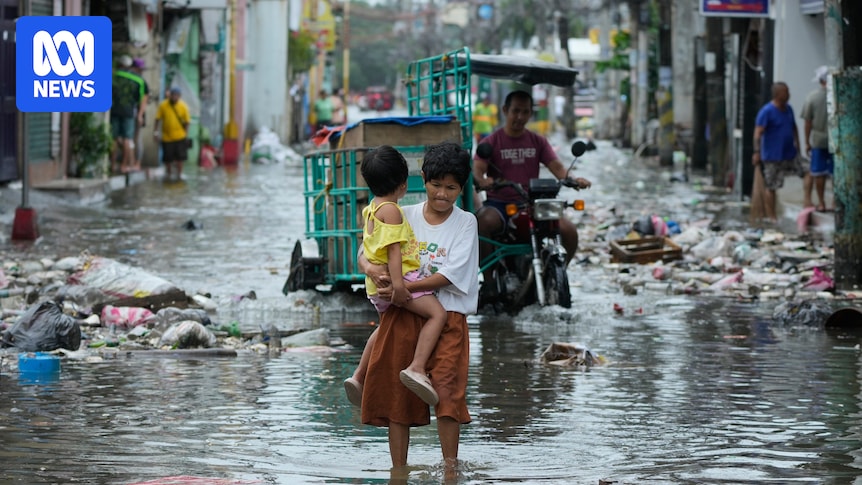
Typhoon Fung-wong swept through the north-western Philippines on Monday, leaving a trail of destruction in its wake. The storm claimed the lives of at least eight individuals and forced over 1.4 million people to evacuate their homes. As the typhoon moved towards Taiwan, it unleashed flash floods, landslides, and widespread power outages across entire provinces.
The typhoon’s onslaught comes as the Philippines is still grappling with the aftermath of Typhoon Kalmaegi, which struck just a week prior. Kalmaegi resulted in the deaths of at least 224 people in the Philippines before continuing its destructive path to Vietnam, where it claimed five more lives.
Impact and Immediate Consequences
Fung-wong, a massive storm spanning 1,800 kilometers, made landfall in the north-eastern Aurora province on Sunday night. It brought with it winds reaching up to 185 km/h and gusts of up to 230 km/h. The storm weakened overnight but not before causing significant damage as it moved from La Union province into the South China Sea.
Tragically, the storm’s wrath was felt across various regions. In the eastern province of Catanduanes, one person drowned due to flash floods. In Catbalogan city, eastern Samar province, a house collapse led to another fatality. The northern province of Nueva Vizcaya reported the deaths of three children in separate landslides, while an elderly person perished in a mudslide in Barlig, Mountain Province. Additionally, a landslide in a nearby province resulted in two more deaths, with two individuals still missing.
More than 1.4 million people were evacuated ahead of the typhoon, with approximately 318,000 remaining in emergency shelters as of Monday.
Rescue and Relief Efforts
The typhoon’s fierce winds and torrential rains inundated at least 132 northern villages, trapping residents on rooftops as floodwaters rose rapidly. The Office of Civil Defense reported damage to around 1,000 houses. Bernardo Rafaelito Alejandro IV, a spokesperson for the office, emphasized the ongoing risks, stating, “While the typhoon has passed, its rains still pose a danger in certain areas in northern Luzon, including metropolitan Manila.”
In response, Philippine President Ferdinand Marcos Jr declared a state of emergency on Thursday. Rescue, relief, and disaster-response operations are underway, with authorities prioritizing the safety and well-being of affected communities.
Broader Implications and Historical Context
The Philippines, a nation frequently battered by natural disasters, experiences approximately 20 typhoons and storms annually. The country is also prone to earthquakes and volcanic activity, making it one of the world’s most disaster-prone regions. Despite the devastation caused by Typhoon Kalmaegi, the Philippines has not yet requested international assistance. However, both the United States and Japan have expressed their readiness to provide aid if needed.
Authorities announced the closure of schools and most government offices on Tuesday. Over the weekend and into Monday, more than 325 domestic and 61 international flights were canceled, and over 6,600 commuters and cargo workers were stranded in ports due to the coast guard’s restrictions on maritime travel.
Looking Ahead
As the Philippines begins the arduous task of recovery, the focus remains on providing immediate relief to those affected and rebuilding infrastructure. The resilience of the Filipino people is once again being tested, but with coordinated efforts from local and international communities, the nation aims to overcome this latest challenge.
The situation remains fluid, with further updates expected as rescue and recovery operations continue. The global community watches closely, ready to assist as the Philippines navigates the aftermath of Typhoon Fung-wong.







